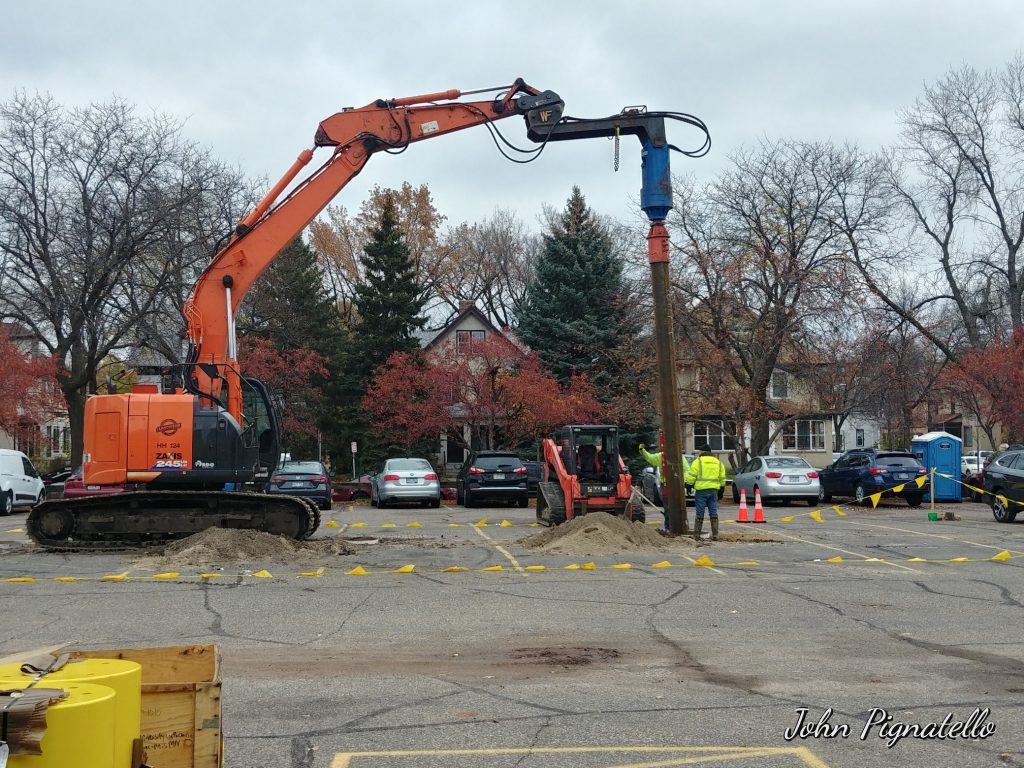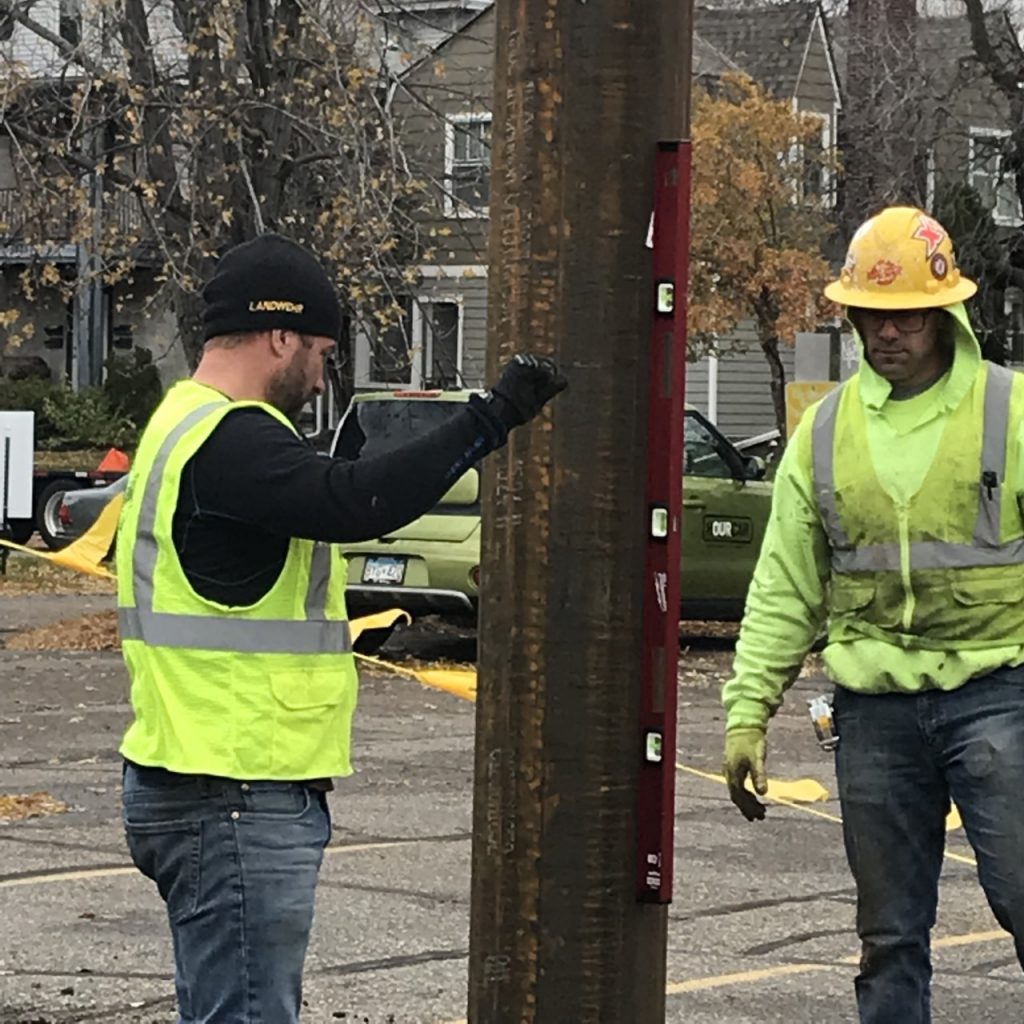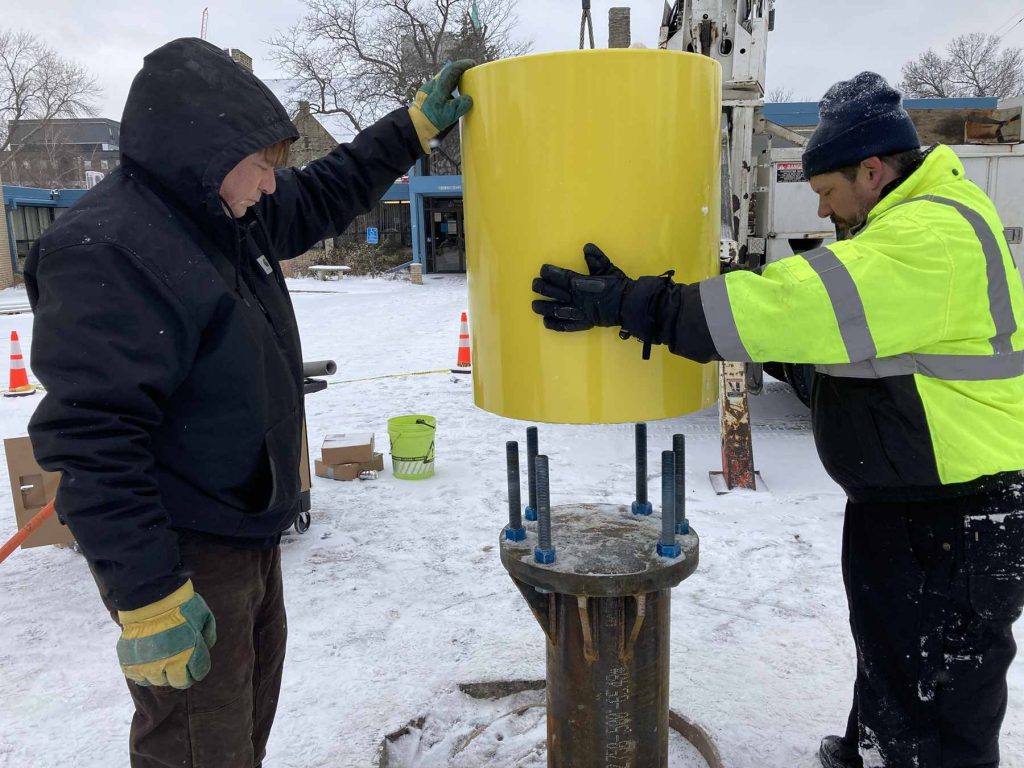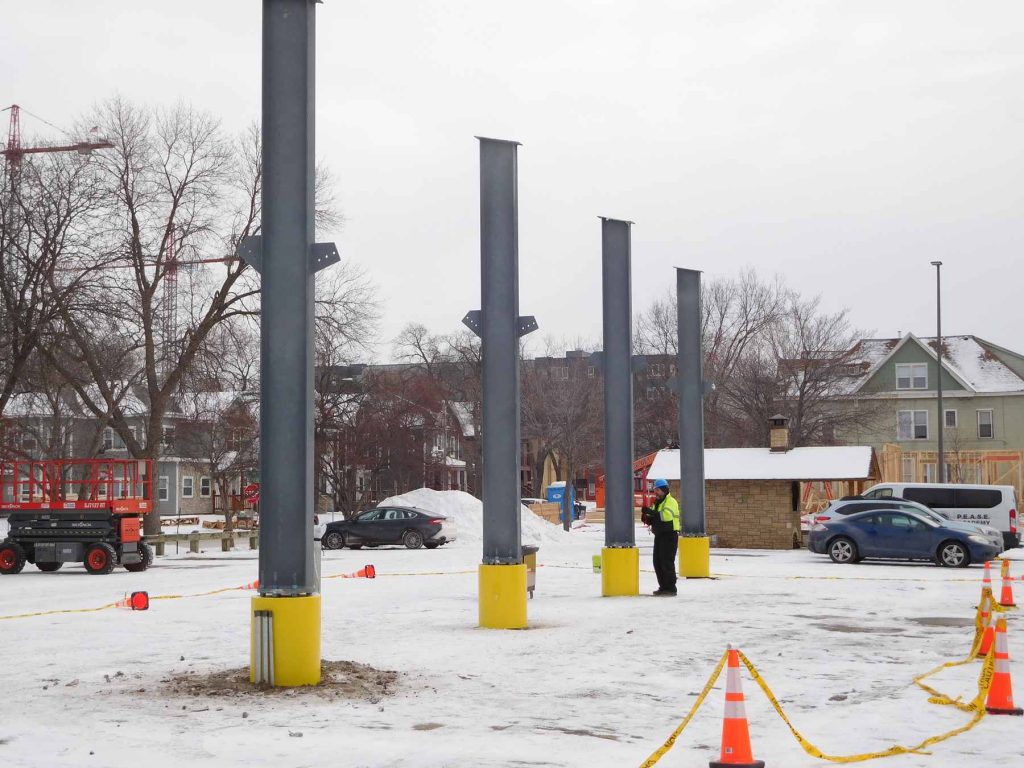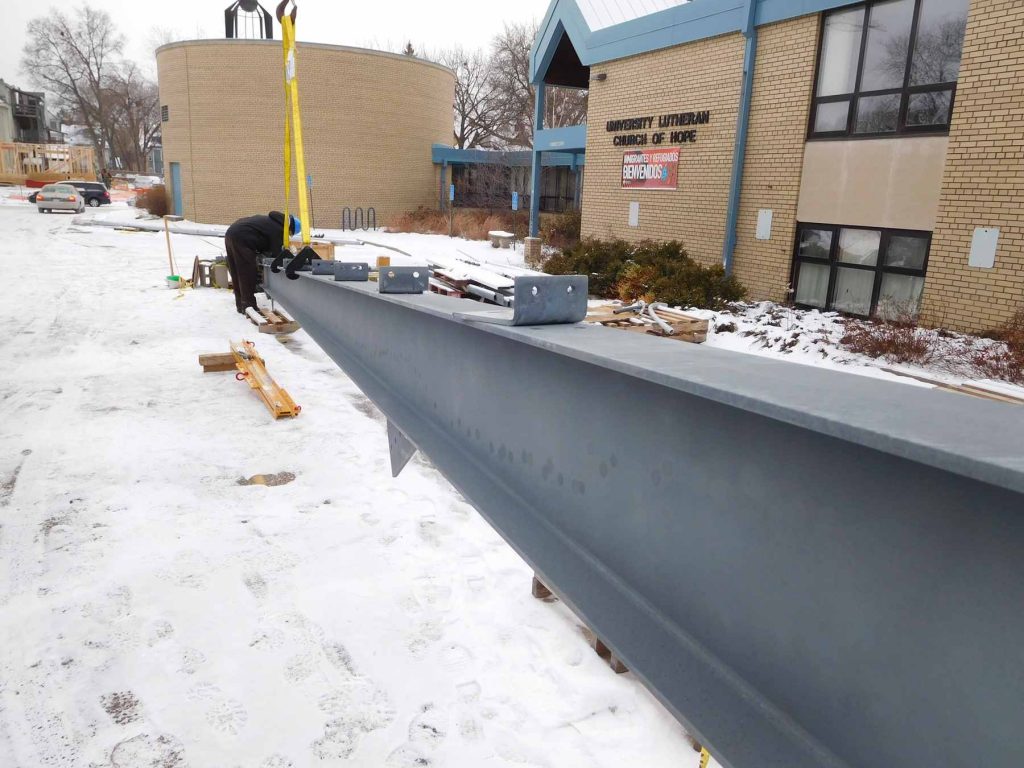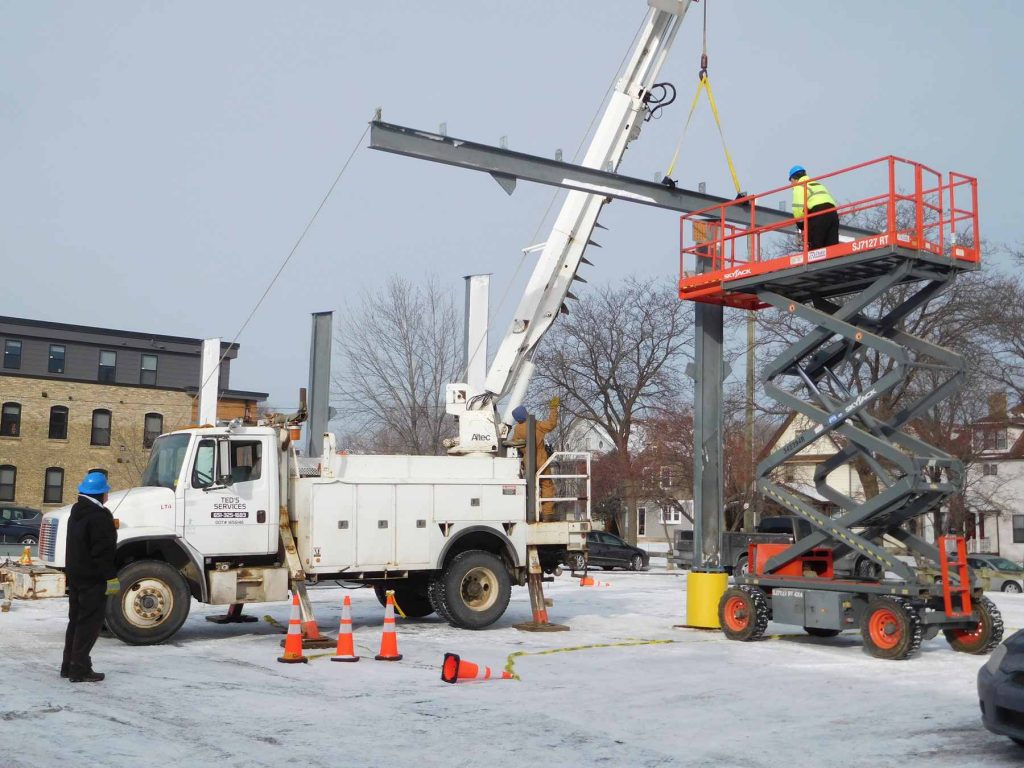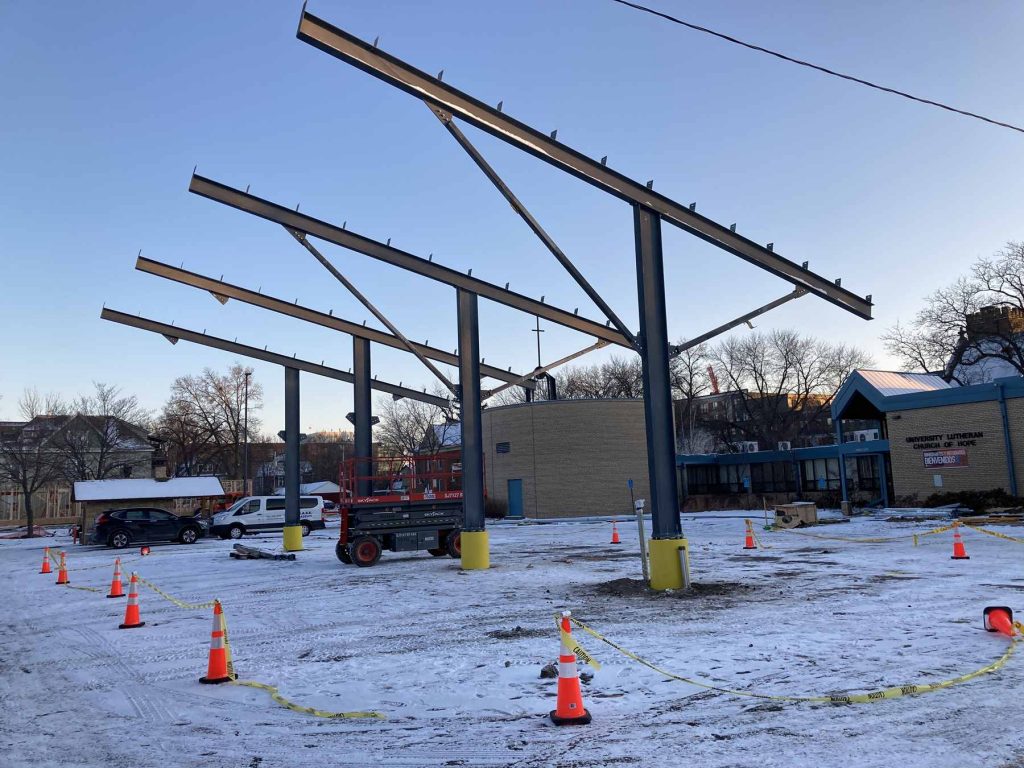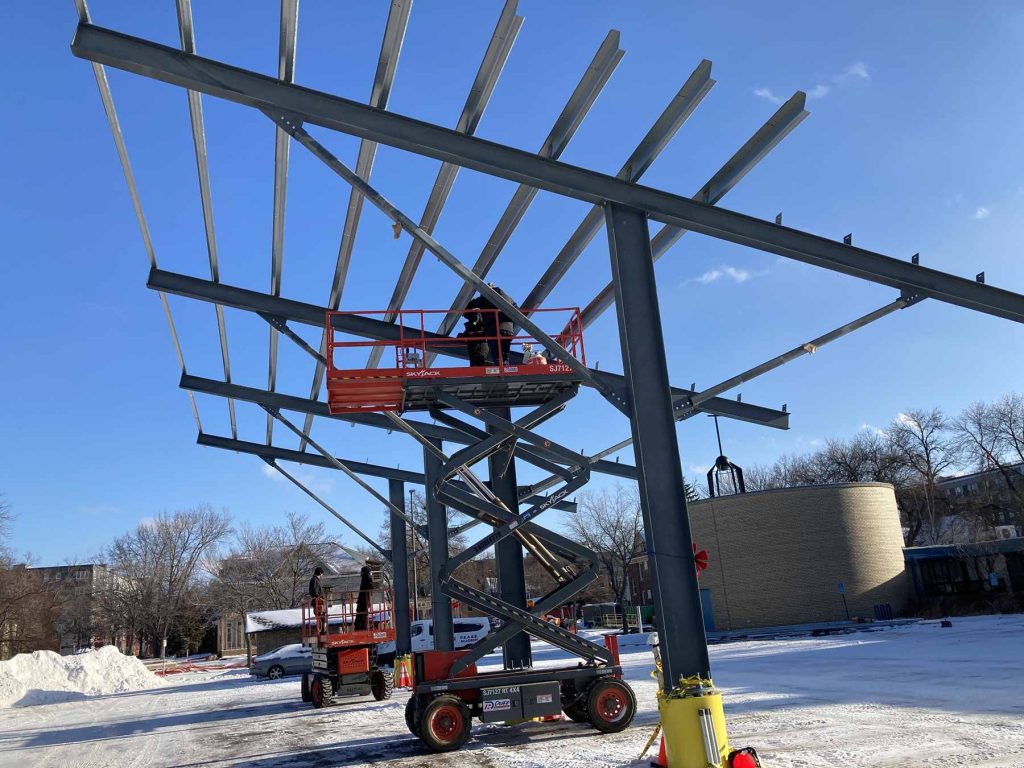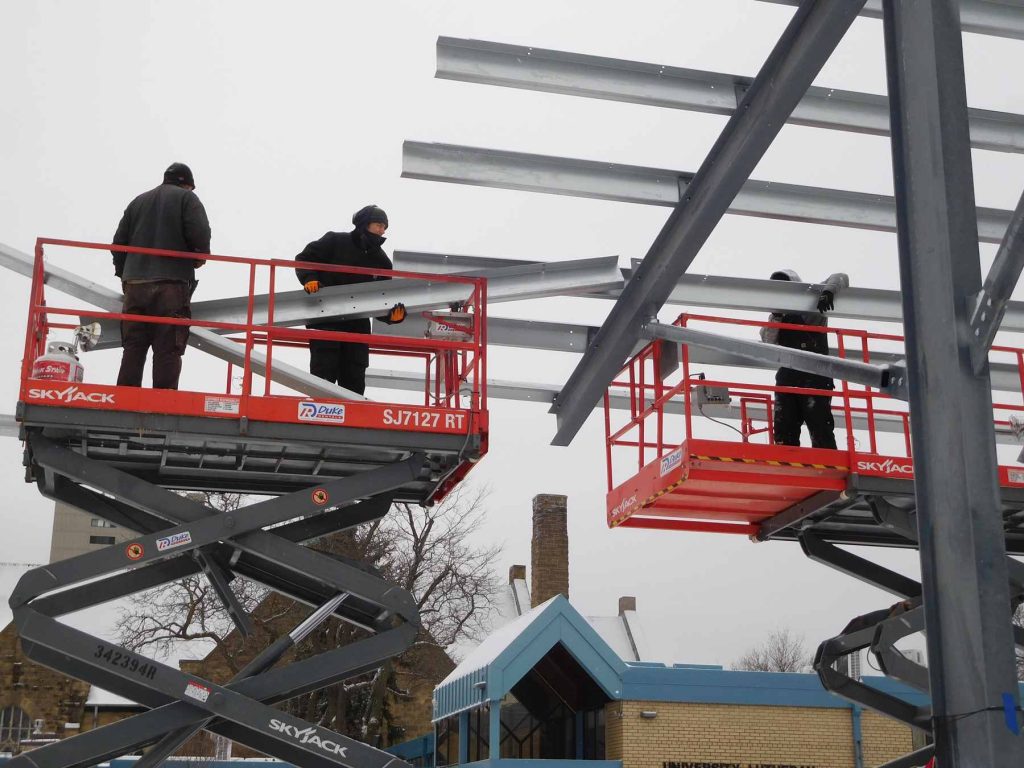Click here to view live monitoring and reporting from our solar monitoring system website.
What is solar energy?
The rays from the sun which make us feel warm! Photons radiate from the sun and impart energy as warmth to our skin, light to the day, and energy to living plants, and so forth.
How can we get electricity from solar energy?
Those same photons jostle electrons in certain receptive materials, such as silicon, which is a basic material in sand. The jostled electrons can be harvested as electric current. The harvesting is done through solar panels, which flat rectangles of aluminum and glass. Sunlight passes through the glass and sets up a current in the blue or black sheets of silicon that lie right beneath.
How did ULCH get involved with solar energy?
The Green Team headed by Kathy Knudson and Marty-Lewis Hunstiger for years has been proposing ways to make our church facilities more sustainable. Two years ago the congregation applied to become a Minnesota Interfaith Power & Light “climate justice” congregation. Actual advocacy began in 2019, by Tim Abrahamson and Stewart Herman, who had years of experience with their own rooftop solar installations. They made presentations in Sunday Forums and arranged for site visits by solar contractors.
In 2020, Minnesota Interfaith Power & Light offered a program to cut costs by bundling congregations together, and ULCH signed on. In June 2020, the congregation overwhelmingly approved a design to provide 100% of the church’s annual consumption of electricity through solar energy.
How much did the solar system cost?
The final cost is $292,972 for the system itself, plus some smaller adjunct contracts amounting to about $30,000. Three major financing steps made the solar installation possible. First, the ULCH Trust provided a loan for half the funding needed–$145,000, and then a grant for $11,000. Second, 12% of the cost ($35,000) was covered through a funding agency (Collective Sun) for non profits. Third, a grant was secured from the Minneapolis ‘Green Cost Share’ program ($21,000). Fourth, congregational members stepped forward with a total of $75,000 in anonymous donations. Some smaller expenses continue.
How big is the system?
Here numbers are needed. The flat roof of the educational wing supports some 96 solar panels. The canopy supports 132 more, for a total of 228. In sum, these panels mean that the system could produce 91 kW at its best—but that is a theoretical maximum. Our system actually produces 70kW at its best, in large part because the solar electricity has to be ‘inverted’ from direct current (DC) to alternating current (AC). We use mainly AC in the church.
Why is there a canopy—why not have all the panels on the rooftop of the church?
The flat roof of the educational wing would not have been large enough for our solar system to provide 100% of our annual usage. And for reasons of historical preservation, the congregation decided not to mount solar panels on the roof of the sanctuary. Finally, it was decided not to cut down any trees, such as those the courtyard, to increase the solar energy reaching the panels. So we needed extra space, and ULCH has pioneered the use of a canopy over a church parking lot.
Is the solar system working?
The solar system began producing power since February 25, but on and off. After some major technical and contractual hiccups, the system began producing at full power on April 22. And as of the end of May 2022, it has produced some 28% of the 100% promised (100% of the church’s consumption of electricity in 2022).
How can we tell how much power it is producing? The solar panels don’t exactly announce what they are doing, after all! They just….sit there.
The way to tell what the system is doing is through electronic monitoring, over the internet. A company called APSystems collects the production data, and we livestream it through the monitor at the north entrance. In addition, on every Sunday, the total amount produced is posted on the bulletin board just below the monitor. As part of our educational initiative, we are trying to arrange for congregational members themselves to access our solar data directly on their own computers and phones.
Electricity is measured in kilowatts (kW) and kilowatthours (kWhrs). What is the difference, and which matters for the church?
Think of driving a car. To measure how fast you are going, you look at the speedometer. But to measure how far you are going, you look at the odometer. A solar system operates the same way, even if it does not move! The sun comes up and the ‘speedometer’ needle starts moving–in our case, to a maximum of 70 kilowatts. What this means is that at any particular instant, the system will be producing that much power. But that is not enough. It doesn’t tell us how ‘far’ the system has gotten. For that we need an ’odometer’, measured in kilowattHOURS. Just as a car moves 70 miles in one hour, a solar system produces 70 kilowatthours in one hour. Of course, when clouds roll in the ‘speed’ will drop, and so will the output. As a result, the daily output looks like a roller coaster, going up and down depending on cloud cover.
Why didn’t we put in a solar system before?
Solar systems only recently have been coming down in price. The church system has cost $3.12 per watt, which is not bad considering that 3/5 of output comes from a canopy—which is much more expensive to build than a rooftop array.
What is the financial return on our investment? Will the system pay for itself, and when?
This is complicated question to answer. The first thing to note is that there are three solar income streams: first, the solar electricity that is used directly by the church and doesn’t run through the Xcel meter; second, the surplus solar electricity which the church sells to Xcel; and third, an incentive that Xcel pays us for surplus electricity produced from 1 to 7pm. We won’t know the total flow until the solar billing settles into a pattern. A further complication is that we have a disadvantageous billing arrangement with Xcel which we are trying to improve, and that will involve major efforts at energy conservation. What we do know for certain at this point is that we will not get ‘free’ electricity from the sun until we repay the loan to the ULCH Trust—in 14 more years. We are paying about $1000 per month, in both principal and interest (3.5%). But by year 15, when we no longer have those payments, the system will be producing free electricity.
How long will the system last, and who will pay for any repairs and maintenance?
The major parts of the system (panels, inverters) are warranted for 20 years or more. For us, success is measured by how long the system will produce 100% of the electricity we use. By year 25, it is possible that the panels will be producing only 80% of their current power level. At some point, they will need to be replaced. So with new panels as needed, and some occasional maintenance, the system should last for decades. For the first six years, any maintenance costs are borne by Collective Sun. After that, we might need to spend a few hundred dollars for an annual inspection.
What could damage the panels?
Hail obviously is a threat. The recent hailstorm (1/2” diameter) did no damage that we could see. Another possibility is vandalism. We raised the canopy to almost 20 feet off the ground to minimize access. Of course, the rooftop is difficult to access as well without a key. With normal vigilance, vandalism should not be a problem.
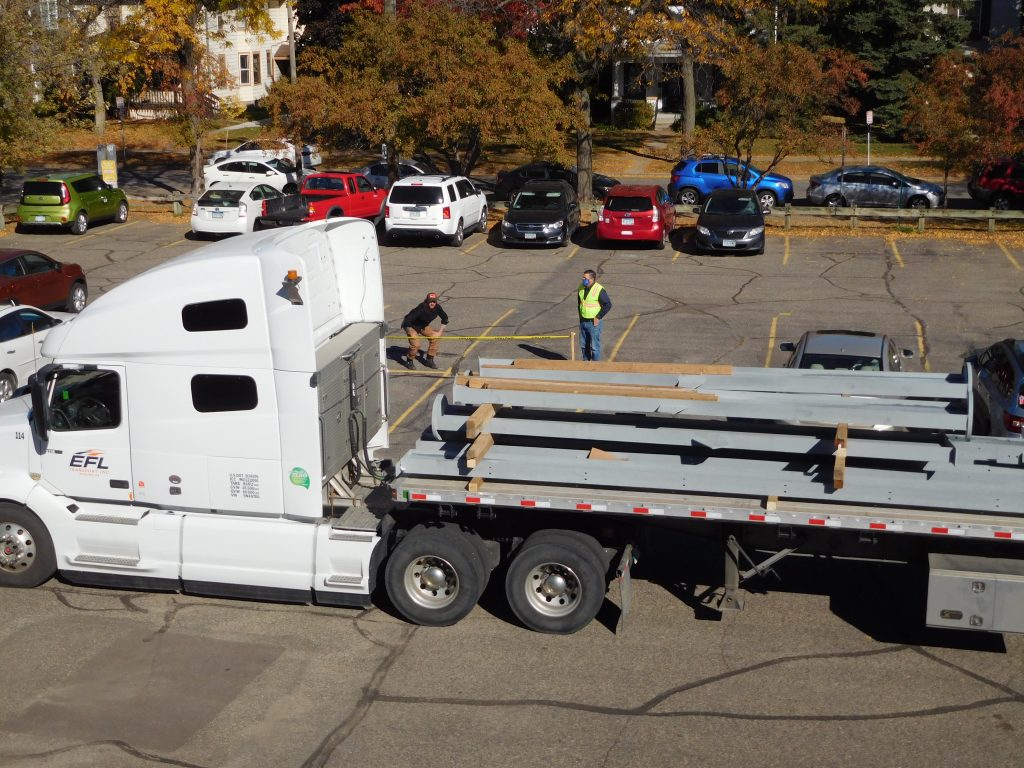
Solar Girders being delivered 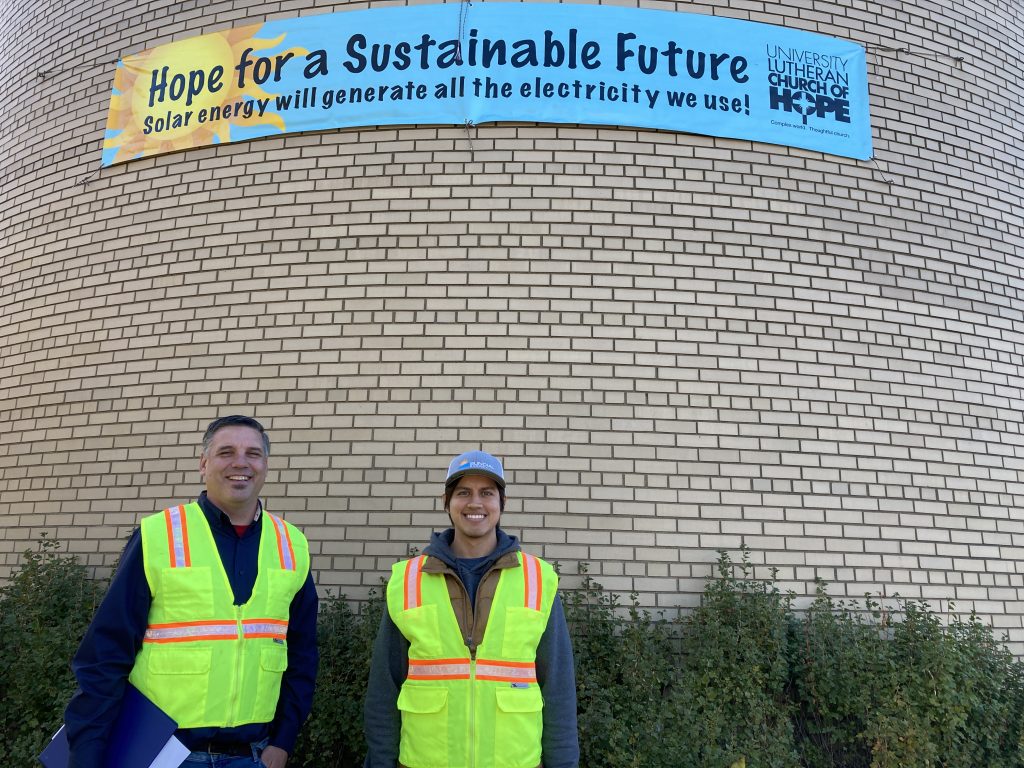
Sundial Energy Team Leaders 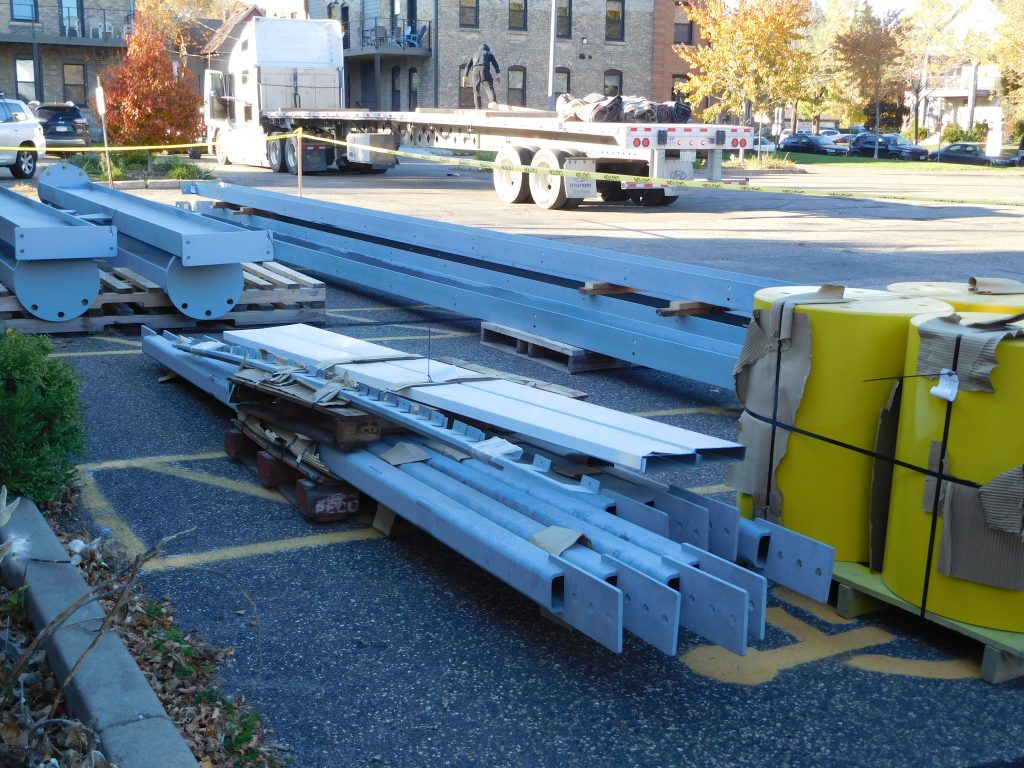
Construction Storage Area – Please keep clear of this dangerous area. 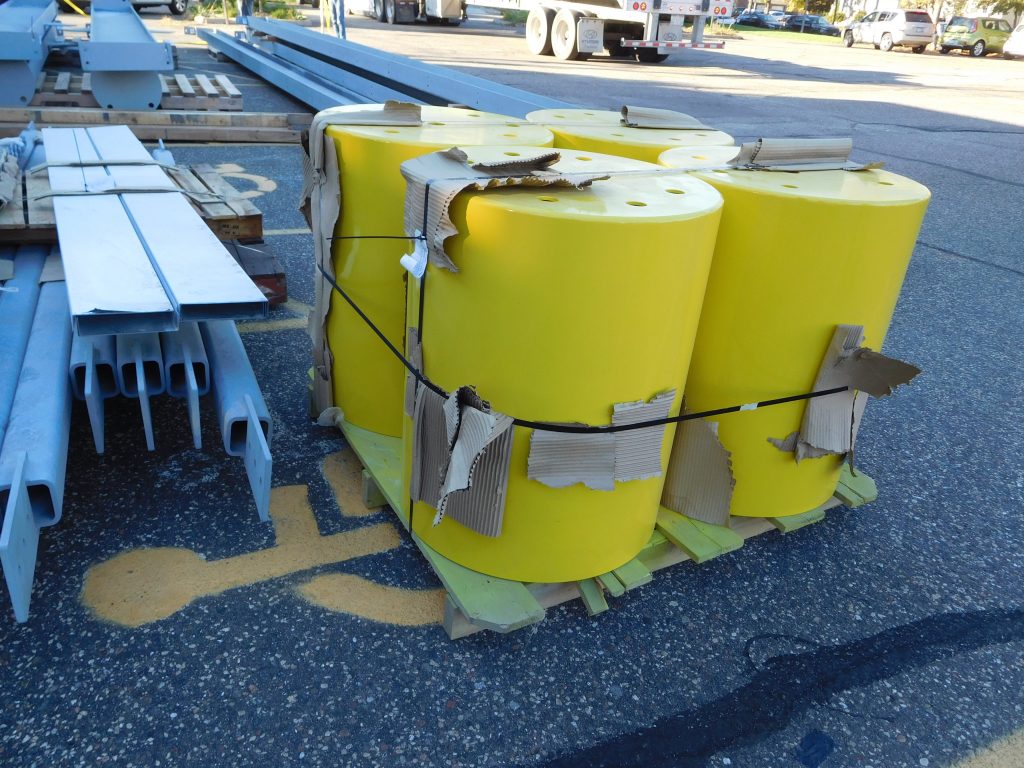
Canopy shrouds to protect the canopy from vehicle damage 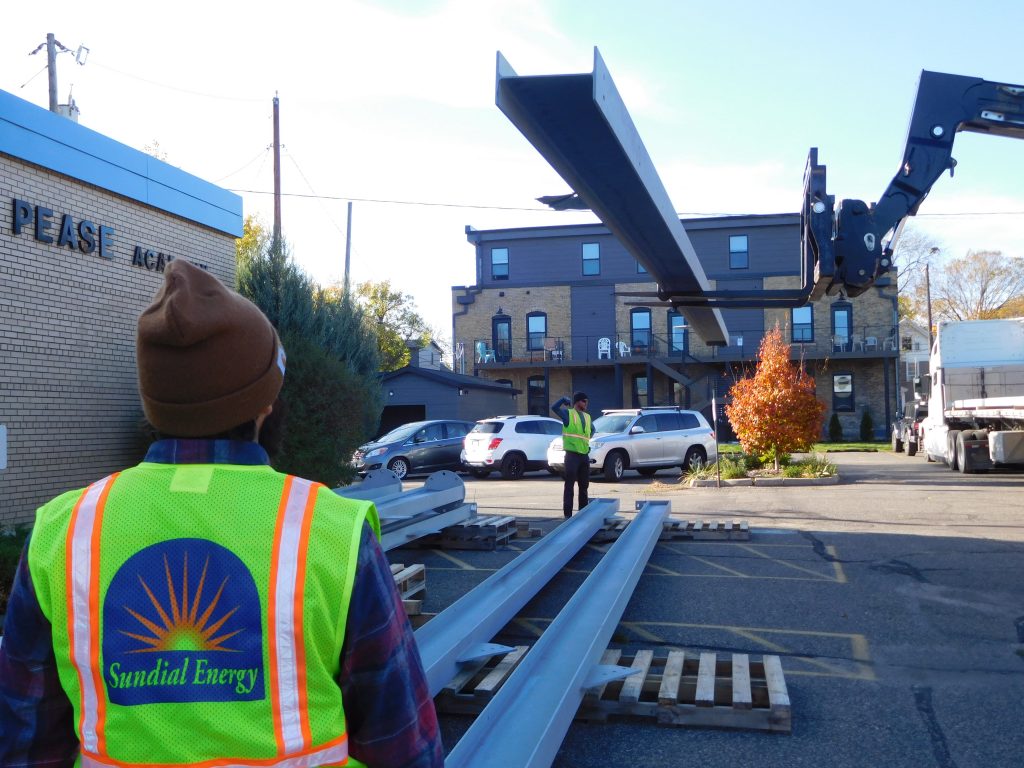
Crane unloading girders 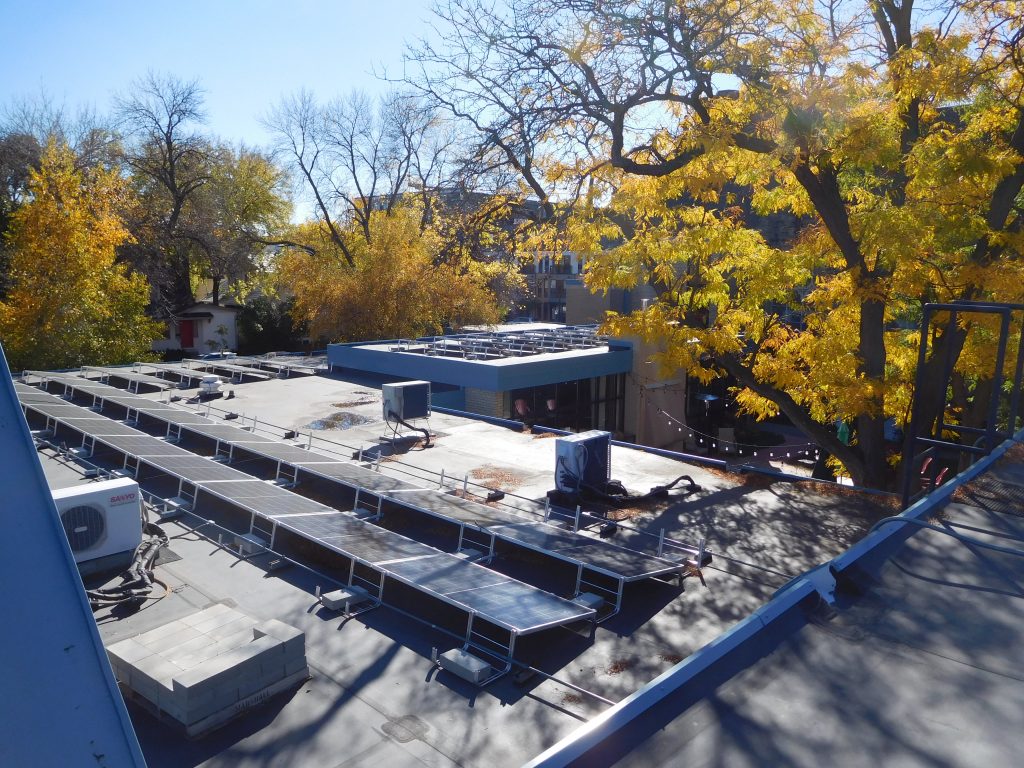
Solar rooftop panels 